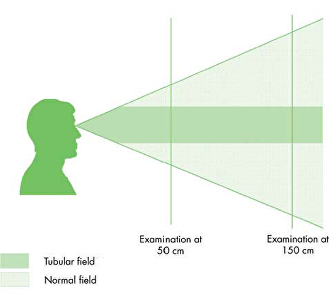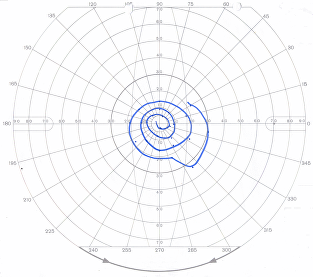Visual symptoms can be functional or dissociative. The following types of symptom are quite common:
Typically people complain that their vision intermittently goes “blurry” and they have to screw up their eyes to make things come back to normal. Sometimes the vision may even be double. This symptom is often due to “convergence spasm”. This is when one of the eyes is too actively ‘turning in’ towards the nose. Convergence is a normal eye movement but sometimes it becomes hyperactive in people with FND or functional neurological symptoms.

This is common in people with chronic fatigue syndrome. It may also occur in people with functional weakness and sensory symptoms. Often people are more light-sensitive on the same side as the weakness. Strong light may even make the weakness worse.
A natural response to this symptom is often to wear dark glasses. The trouble with this is that this tends to make the eyes even more sensitive to light. The best approach to light sensitivity is to gradually expose the eyes to more and more light over time. This may need to be done gradually.
More rarely people may experience significant loss of vision in one or both eyes. Occasionally people cannot see anything at all. In this situation the diagnosis of functional blindness will be made by tests that show the pupils are reacting normally, the eyes are reacting to a moving stimulus and the parts of the brain to do with vision are all intact.
People with functional visual symptoms may have clinical findings such as a ‘tubular field defect’ or spiral fields when they undergo visual field testing (See picture below).

The commonest type of functional visual impairment is usually only experienced by people as intermittent blurring – or not seeing so well out of one eye when they cover the other one. Its especially common that someones vision seems much worse when they do an eye test or are examined by a doctor than it is in day to day life. It’s a common feature of many FND symptoms that they are worse when someone is focusing on them like this.
There isn’t much research on treatment for functional visual loss.
I wrote up my experience of treating two patients with functional blindness in this article:
Seeing again: treatment of functional visual loss
Jing Ming Yeo, Alan Carson, Jon Stone. Practical Neurology 2019: 19: 168-72
https://pn.bmj.com/content/19/2/168.long
Sometimes people become aware of a snowlike effect in their vision. This could be due to an eye or brain disorder but it can also be a normal phenomenon. If anyone looks at a bright background they may become aware of a fuzzy, ‘static’ with a sense that things are moving around. In some people this persists. Normally the brain blocks out this additional visual information. Research has linked visual snow to migraine.
People also can become aware of the persistence of visual images, especially after they have been looking at something for a while or if they are trying to follow a rapidly moving object. Like visual snow, it’s really important to exclude a neurological or ophthalmological cause for this but it can occur, as part of a functional disorder. It may be due to the same problem of the normal ‘filtering’ mechanism in the brain which blocks out the excess visual information going wrong.


We will be re-directing you to the University of Edinburgh’s donate page, which enable donations in a secure manner on our behalf. We use donations for keeping the site running and further FND research.
